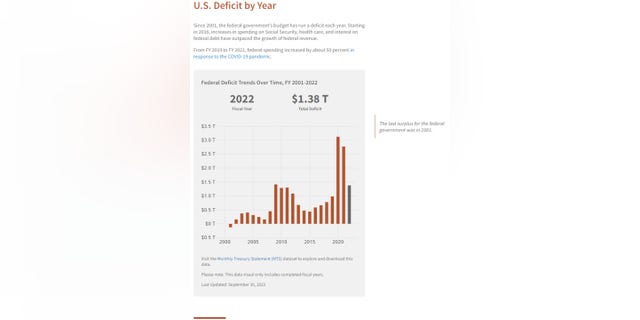What’s in it: House GOP rules package aims to curb trillions in yearly heaps of new debt
A 55-page set of rules for the House that House Speaker Kevin McCarthy hopes to pass on Monday will set ambitious new curbs on federal spending, part of the GOP’s effort to stop piling on trillions of dollars in new debt each year.
One of the biggest changes is a return to a “Cut-As-You-Go” policy that says legislation cannot be considered if it increases mandatory spending over a 5- or 10-year period of time. This “CUTGO” policy requires bills that call for new spending to find offsetting spending cuts elsewhere in the federal budget.
That is a more aggressive stance compared to the “Pay-As-You-Go” policy under Democratic control. “PAYGO” also requires offsets to new spending, but those offsets can either be spending cuts or tax increases – and in either case, PAYGO rules were often waived entirely by Democrats.
JORDAN SAYS CUTS TO MILITARY SPENDING SHOULD BE ‘ON THE TABLE,’ AS MONEY SHOULD NOT GO TO ‘WOKE’ POLICIES
The decision to go with CUTGO shows the new GOP’s aversion to possible tax hikes, which can be seen elsewhere in the new rules package. For example, the rules require a supermajority in the House to approve new tax increases.
“A bill or joint resolution, amendment, or conference report carrying a federal income tax rate increase may not be considered as passed or agreed to unless so determined by a vote of not less than three-fifths of the Members voting, a quorum being present,” the rules state.
In another push to stop piling on new debt, the rules will end the practice of allowing the House to automatically increase the debt ceiling through passage of a budget resolution that would require borrowing above the current ceiling. Instead, the GOP will require separate votes to raise the debt ceiling in a bid to restore accountability to Congress.
The current debt ceiling is $31.38 trillion, and the government is on the verge of hitting that cap.
THE INCREDIBLE CONGRESSIONAL SPENDING SPREE OF 2022

The rules package also instructs House committees to prepare plans for strict oversight of the Biden administration, including an assessment of which programs continue to receive funding from Congress even though their authorization lapsed. It calls on committees to make recommendations on how to either consolidate or terminate those programs.
The package brings back the so-called Holman Rule, which allows members to chop specific agencies or even the salaries of specific federal employees when appropriations bills are being considered.
Republicans have argued for the past year that excessive federal spending is a major cause of inflation levels that have not been seen in 40 years. They say spending reductions will help to curb inflation. Along those lines, the rules package calls on the Congressional Budget Office to analyze the impact of spending bills on inflation whenever they spend a significant amount of money, or whenever this analysis is requested by the House Budget Committee chairman.
HOUSE QUICKLY APPROVES $1.7T SPENDING BILL, FLEES DC FOR CHRISTMAS BREAK

The rules package does not include other spending goals held by the GOP, such as its desire to cap fiscal year 2024 discretionary spending at FY 2022 levels. However, Republicans are also reportedly pursuing that as a goal as well, which has some GOP lawmakers worried about possible defense cuts.
Elsewhere, the rules package includes language requiring all bills to be available for 72 hours before they get a vote – a reaction to the way the Democrats rushed through a $1.7 trillion spending bill last month.
It creates new House committees and subcommittees on the origin of the COVID-19 pandemic, strategic competition with China, and the weaponization of the federal government.
Read the full article Here


